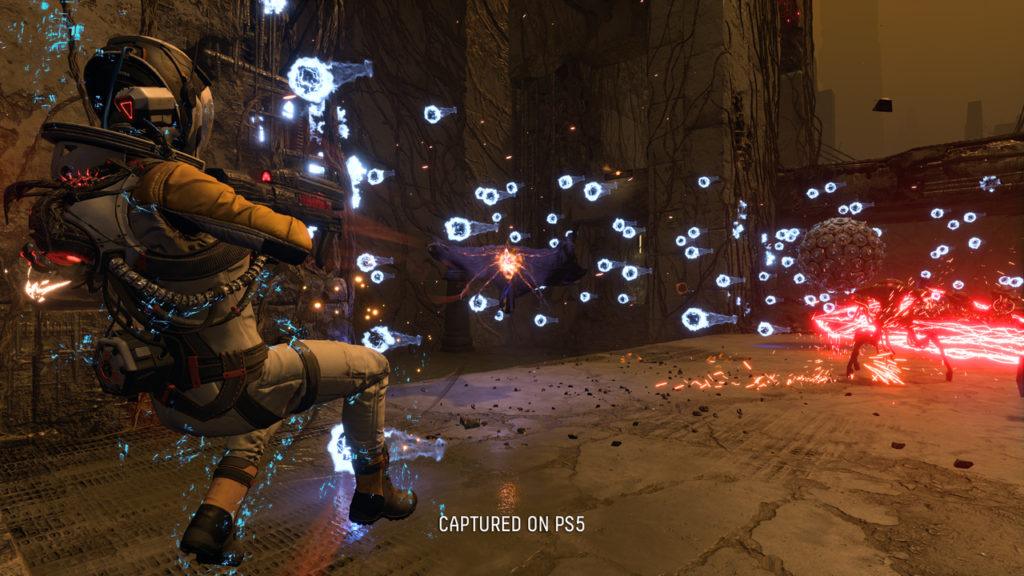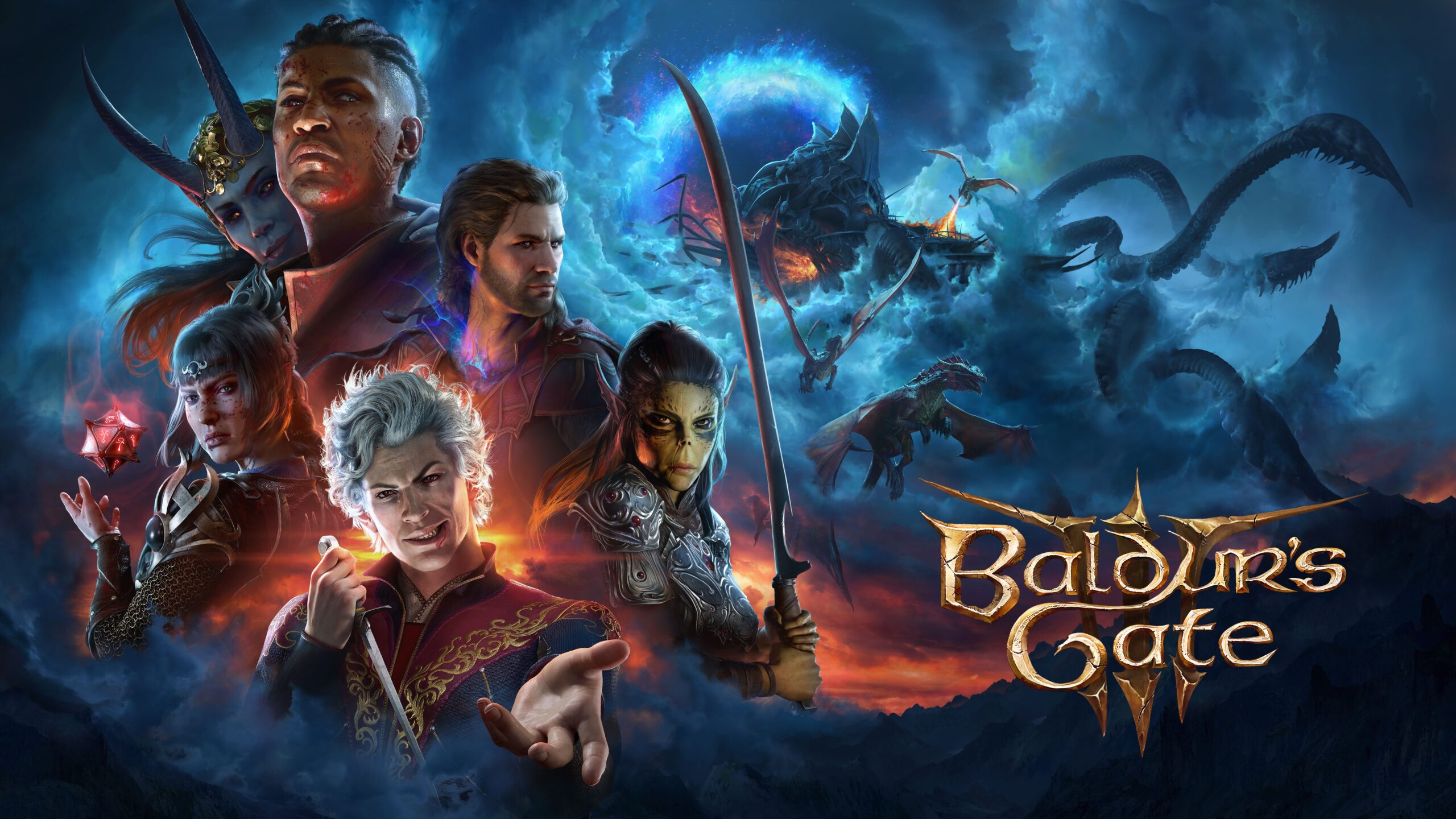
Provided by Housemarque
Returnal: in search of a new connection
During my early teen years, I used to read a local gaming magazine called Loaded. While I haven’t touched the magazine for quite some time, it has a special place in my heart. It was one of the first pieces of media that made me really interested in the video games industry — way before I actually started writing about them for a living.
I might not have revisited these magazines, but some ideas and articles still resonate with me to this day. For example, Issue #55 had a special feature about the “future of gaming”, released during the PlayStation 3 and Xbox 360 era. This article was unusual because it had one special section with contributions from users of the magazine’s online forum — which I was a member of. My “prediction” of the future of video games was even selected and featured, but it was pretty stupid; something about the next console’s analog connections, wireless features, and stuff. However, there was another contribution from another user that caught my eye – he wrote about adding other senses into the experience, particularly the smell. He used a lovely example in which you were playing any Metal Gear Solid and made Snake light a cigarette. Suddenly, your whole room would be invaded by the smell of expensive tobacco.

More than ten years have passed since I read those lines. Sadly, there hasn’t been any technological feature that’s made the previous example real (at least not a popular one that I know about). Our noses are yet to be infected by our favorite and nasty virtual worlds.
However, there has been a recent innovation that brought something that resonated with me in the same way as the aforementioned example: the DualSense. Sure, it has nothing to do with adding new senses into play, but with expanding well-known technology — vibration and triggers’ resistance. On one hand, the classic R2 and L2 buttons feel heavier or lighter depending on our character’s actions, such as shooting different weapons or interacting with the environment. On the other, the days of homogenous and basic vibration are gone: now we can experience unimaginable and ridiculous things like walking on surfaces of diverse materials.
There’s a particular title that greatly showcases these features, making me feel things I haven’t felt before while playing a video game: Returnal.

In case you didn’t know, Returnal makes you play as Selene, an “astronaut” arriving at an unknown planet full of hostile creatures. She doesn’t have any clue what she’s doing in Atropos, and even less of an idea on why she seems to be trapped in a loop every time she dies. There’s a superlative feeling of continuous discovery that never ends until the credits roll. While this has a lot to do with the game’s incredible design, its outstanding symbolic creation, and its breath-taking technical achievements, I’d fight to the death that the control features are what really sell the immersion and create a new level of interaction.

Although Astro’s Playroom, the PlayStation 5 “technical demo”, might use the haptic feedback in more ways than Returnal, it’s in the latter where I found myself struggling and empathizing at the same time with Selene. There’s something else in this story than a woman tragically crashing on a dreadful planet. It’s a tale with fantastic insights and reflections on oneself, how we become who we are today and how we deal with our scars. And we all feel these things by different amounts and intensities of vibration. Each time it’s raining, you’ll feel the drops gently falling. When picking up or scanning new items, the sharp and instant feeling of genuine surprise is there — especially when equipping parasites, feeling its tiny but dangerous limbs infecting our whole palms. Perhaps the most intense reaction comes from Selene’s falling from high grounds or receiving damage — a strong strike to our poor hands. This can be frustrating, especially in a nerve-breaking journey in which you’ll probably die several times. But it also creates intimacy, a reason to care about your character like few other games do.

Speaking of character, we really know next to nothing during the first hours of the journey, with very small pieces appearing in the shape of audio logs. Some of my favorite moments came from visits to a house that Selene seems to know. During those sections, we aren’t only discovering these memories by watching them or controlling the character steps in a first-person camera. We are almost touching them, making these pieces ours, fearing the unknown, and worrying about something that can’t be explained, at least for the time being. The younger version of Selene playing with toys, the attention to photos and documents, the thoughts she shares with us, the unnerving mysterious figure of an astronaut stalking every step… everything is highlighted thanks to the game’s direction and the freaking vibration in the control.

Who would have thought that a bombastic and harsh third-person shooter would become not only my personal Game of the Year, but also a reminder of an old memory fantasizing about the future of this medium? At the end of the day, I mostly play video games for two simple reasons: to have fun and to experience something that makes me question anything about my reality. After playing Returnal for dozens of hours, I had multiple moments of pure joy — with many exciting, stressful, and despairing situations, mind you. Whatsmore, I also experienced a shooter as I’ve never had before, which might have reminded me about the importance of feeling with our body — or our hands — to empathize with others’ pain. If interactivity is what makes video games what they are, I’ll always treasure the works and innovations that try to expand the level of connection with our protagonists, and in doing so, with other human beings.





